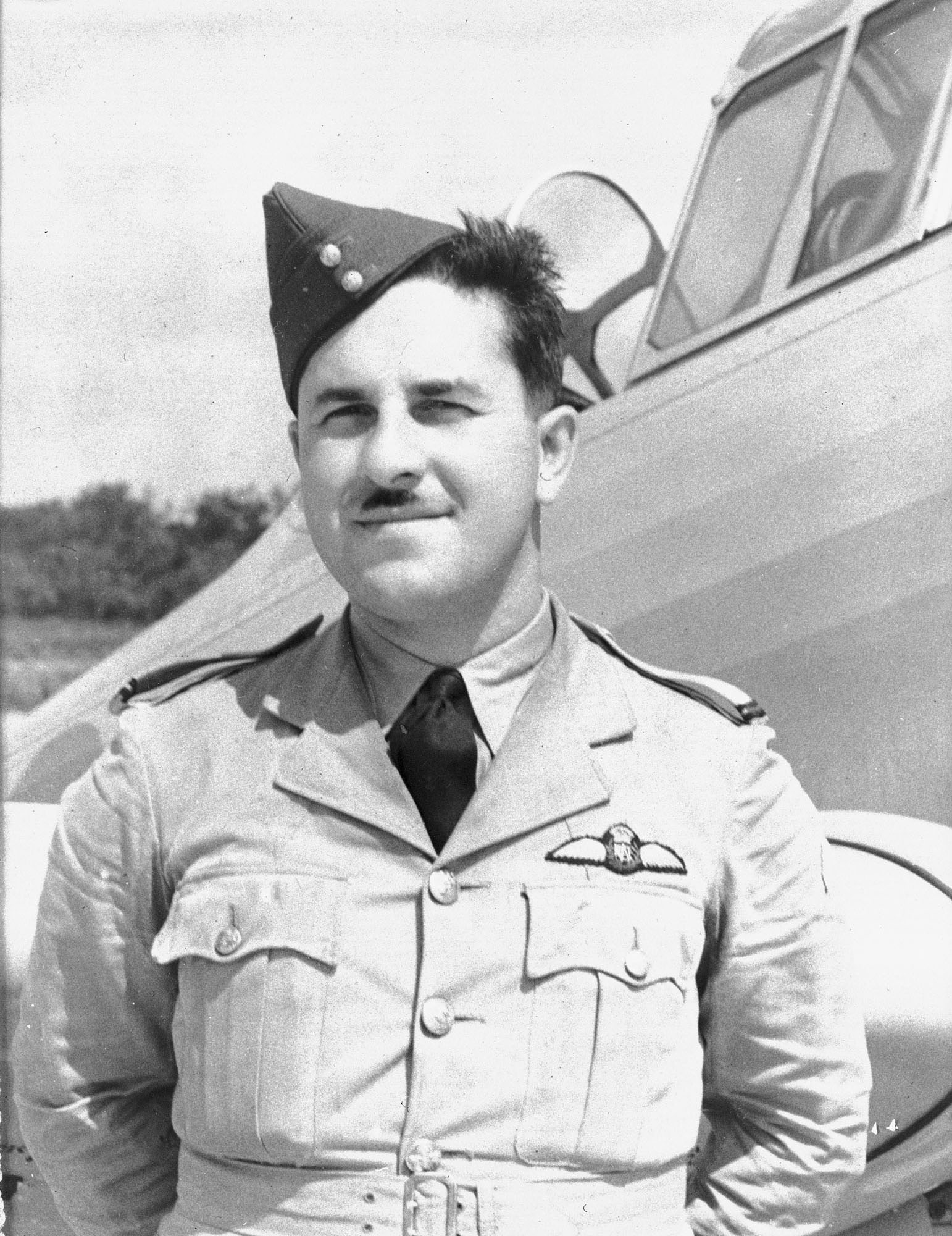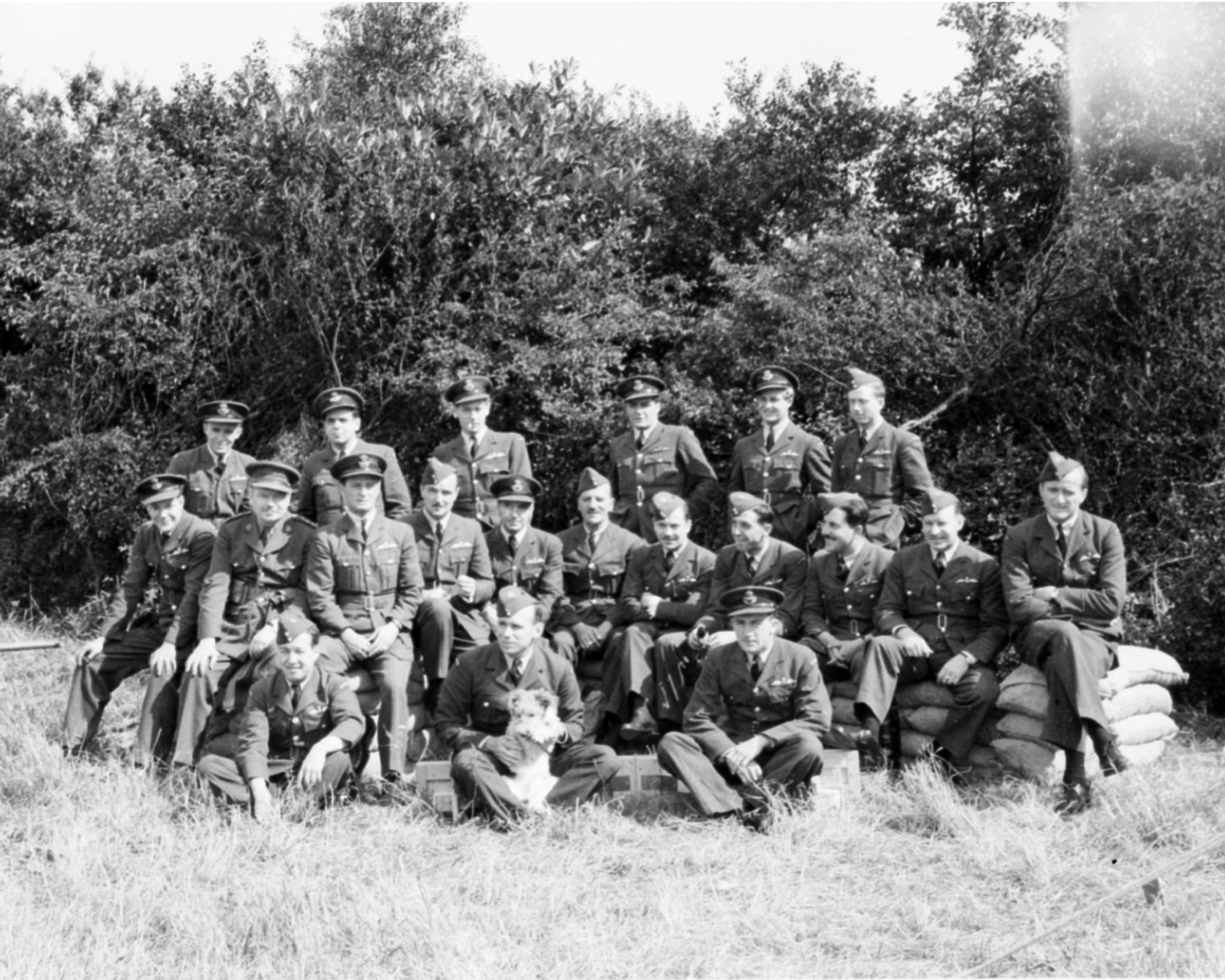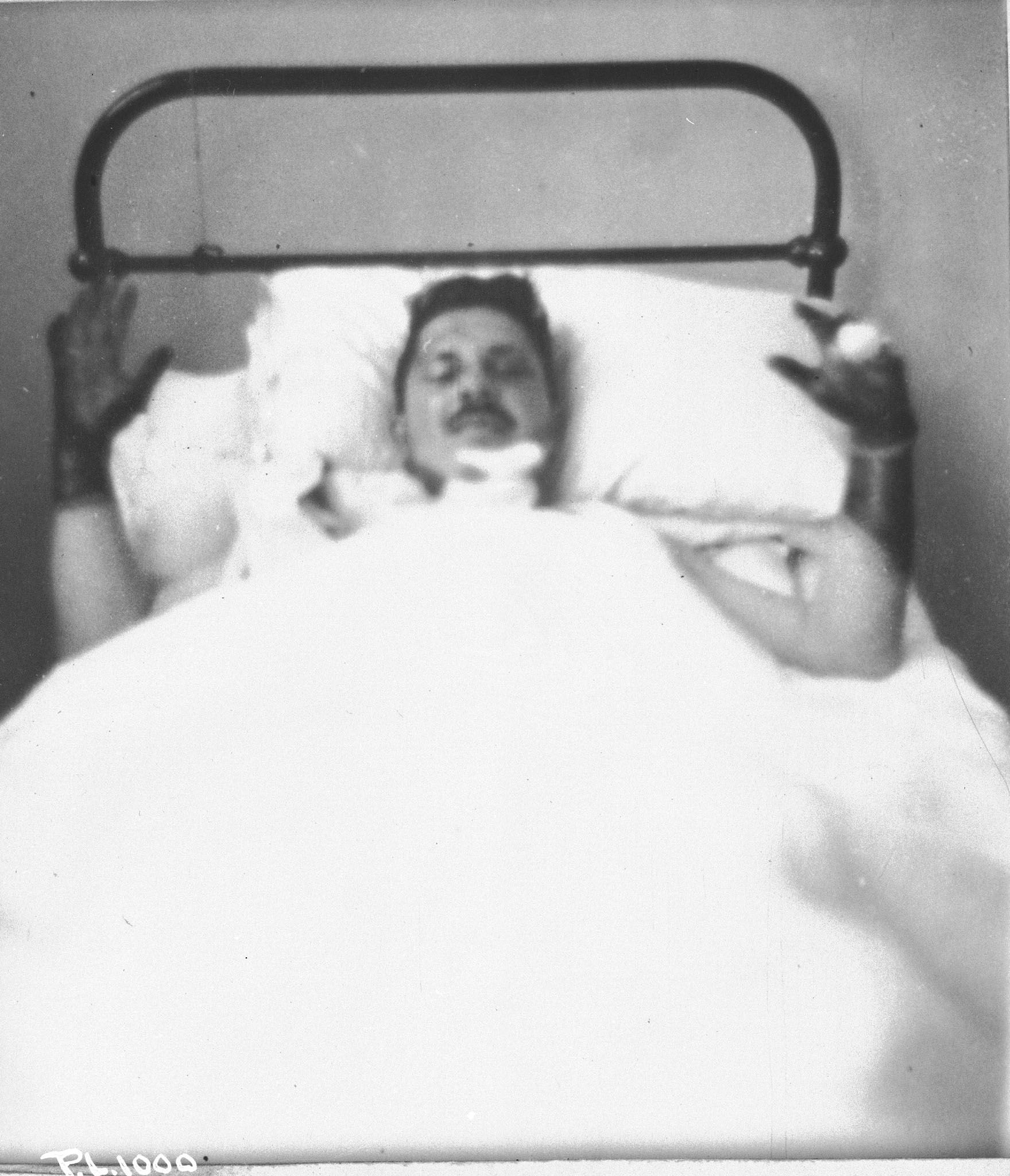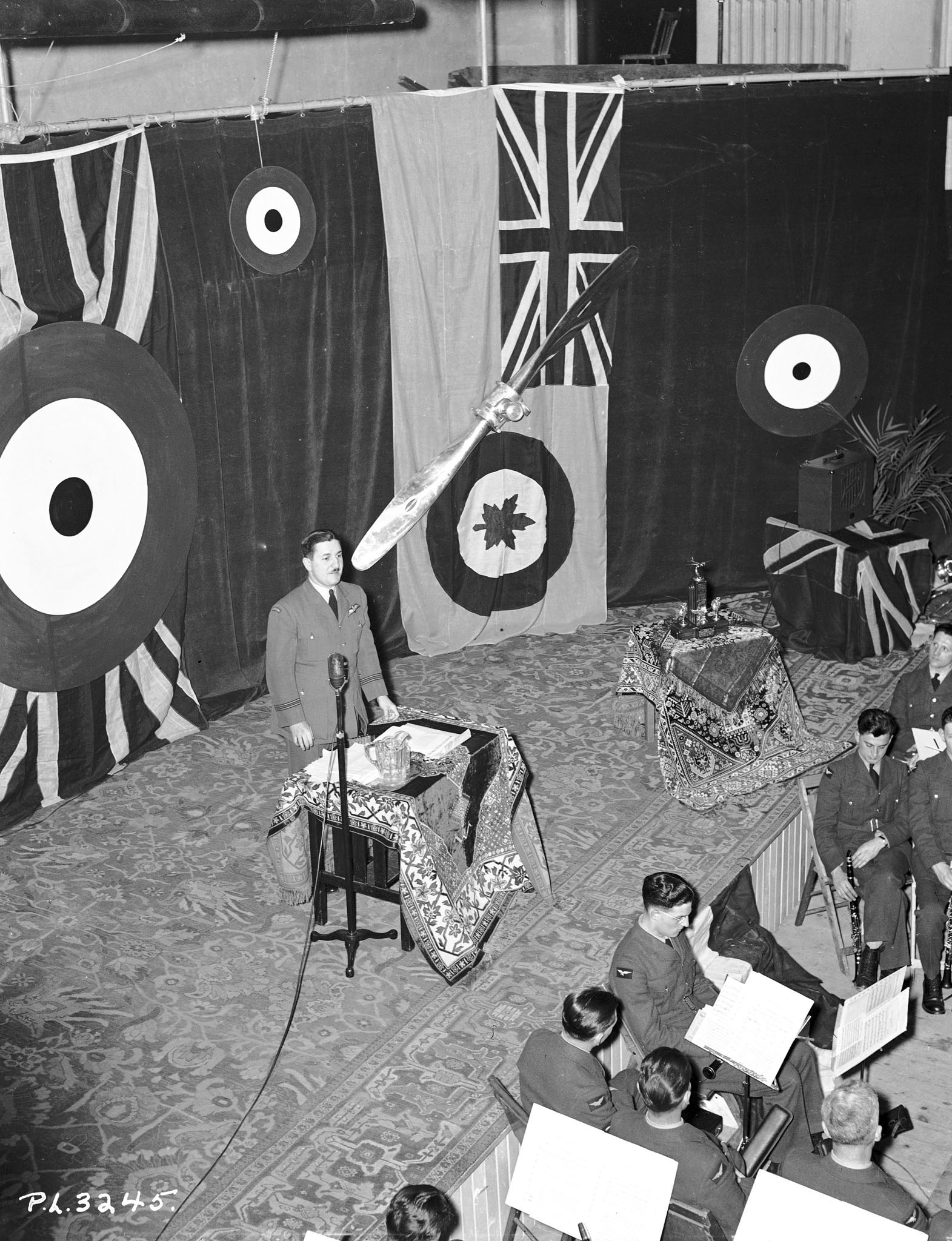Wing Commander Jean-Paul Joseph Desloges
Biography / August 4, 2015
By Major William March
No. 1 (Royal Canadian Air Force) Squadron
Jean-Paul Joseph Desloges was born in Gatineau, Québec, on April 25, 1913, but spent a large portion of his life just across the river in Ottawa. A talented athlete, he seemed to have been born with a pair of skates strapped to his feet. His love of hockey led him to the University of Ottawa for his education because it allowed him to play on the varsity team. Upon graduation, he began a career with the Royal Canadian Mounted Police (where he…played hockey), but, like many of his contemporaries he was attracted to the excitement of aviation. So, in October 1937, at the ripe old age of 24, he enrolled in the Royal Canadian Air Force (RCAF) as a Provisional Pilot Officer.
After successfully completing his training in Borden and Trenton, Ontario, he received his wings in November 1938. For the next 18 months or so Desloges flew at every opportunity, but in May 1940 he found himself part of an expanded No. 1 (Fighter) Squadron (it had absorbed the personnel of No. 115 Squadron) in Dartmouth, Nova Scotia. It was to be a relatively short stay in the Maritimes because he and his squadron mates boarded steam passenger ship Duchess of Atholl on June 8, 1940, headed for England.
Under the command of Squadron Leader E.A. McNab, Desloges and the rest of the Canadians trained hard to prepare themselves for combat against the much more experienced German Luftwaffe. Declared operationally ready on August 17, No. 1 (RCAF) Squadron [so designated to prevention confusion with No. 1 Squadron of the Royal Air Force (RAF)] was transferred to an airfield at Northolt on the western fringe of the London metropolitan area. The Canadians were eager to join the fight.
The Battle of Britain had been going on for more than a month, with almost daily incursions by German aircraft. During this phase of the battle, the enemy was attacking RAF aerodromes to great effect. Although the Canadians were scrambled several times to intercept enemy aircraft, they did not manage to close with the enemy. One can only image the combination of eagerness and nervousness within the pilots, aware as they were of the savage fighting going on all around them. Well trained, the Canadians wanted to do their bit, but they were sobered by the knowledge that this was for real and Allied air personnel were dying every day. Adrenalin pumping and nerves taut, they were scrambled yet again on August 24 in anticipation of in-bound enemy aircraft.
The fight that day was to be a tragic introduction to the realities of war for Desloges and the rest of the squadron. Patrolling at 10,000 feet over Tangmere airfield, the Canadians spotted three twin-engine aircraft below, heading toward Portsmouth, the target of a major German raid. The Canadians, grouped together into two sections, began a diving attack. McNab recognized that the German aircraft were in fact RAF Blenheim bombers and his section broke away before opening fire, but the remaining Hurricanes continued with the assault. Flying Officers A.D. Nesbitt, A. Yuile and W.P. Sprenger claimed a Junkers 88 damaged while Flight Lieutenant G.R. McGregor and Desloges claimed the destruction of another. Upon landing, their elation with these victories quickly turned to dismay when it was revealed that they had in fact shot down two RAF aircraft, one of which crashed into the sea, killing all three crewmen. McNab spoke for Desloges and the rest of the unit when he described it as “the lowest point of my life.”
The growing intensity of German attacks precluded a long period of reflection on this tragic mistake because No. 1 (RCAF) Squadron, now flying out of North Weald, was thrown into the thick of the fray. During its second patrol on August 26, the squadron engaged a group of German Dornier 215 bombers. The enemy’s fighter escort having been drawn away by another RAF squadron, the Canadians pounced on the remaining Luftwaffe aircraft. In short order, three of the enemy aircraft were destroyed, and a further four damaged, but the contest was not all one-sided; accurate defensive fire knocked three Canadian Hurricanes from the sky with the death of one of the pilots, Flying Officer R.L. Edwards. Desloges’ aircraft was badly damaged, but he skillfully force-landed the stricken machine, walking away shaken but with a new-found respect for the sting of German bombers.
Five days later, on August 31, 1940, Desloges’ Battle of Britain came to an abrupt end. It was during the squadron’s second combat of the day, the first having gone distinctly against the Canadians when they were “bounced” by Germans fighters, losing three of their number – fortunately, with injuries only. In the early evening, Desloges and the remaining Canadian pilots took part in the interception over Dover of a large body of German bombers escorted by fighters that refused to be drawn away. In the ensuing melee, the Canadians claimed several German aircraft destroyed or damaged. Desloges became the only Canadian casualty when a cannon shell tore through his cockpit hood, tearing off his helmet, goggles and oxygen mask. Dazed, with his aircraft on fire, he managed to struggle out of the falling aircraft, but suffered severe burns, especially to his hands, in the process.
It took him months to recover from his wounds and, after a stay in hospital in England, he was sent back to Canada to complete his rehabilitation. Having survived the Battle of Britain, Desloges, like so many others, would not survive the war. On May 8, 1944, Wing Commander Desloges, part of a Canadian delegation working with the French in Africa, was undertaking a tour of French air training establishments when the aircraft he was in crashed on takeoff at Rabat, Morocco, killing everyone on board. He is buried in the British Military Cemetery at Dely Ibrahim, Algeria.
Page details
- Date modified:





